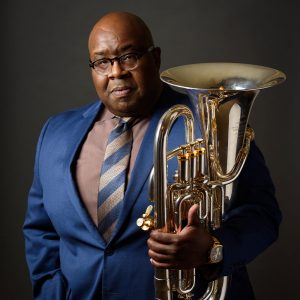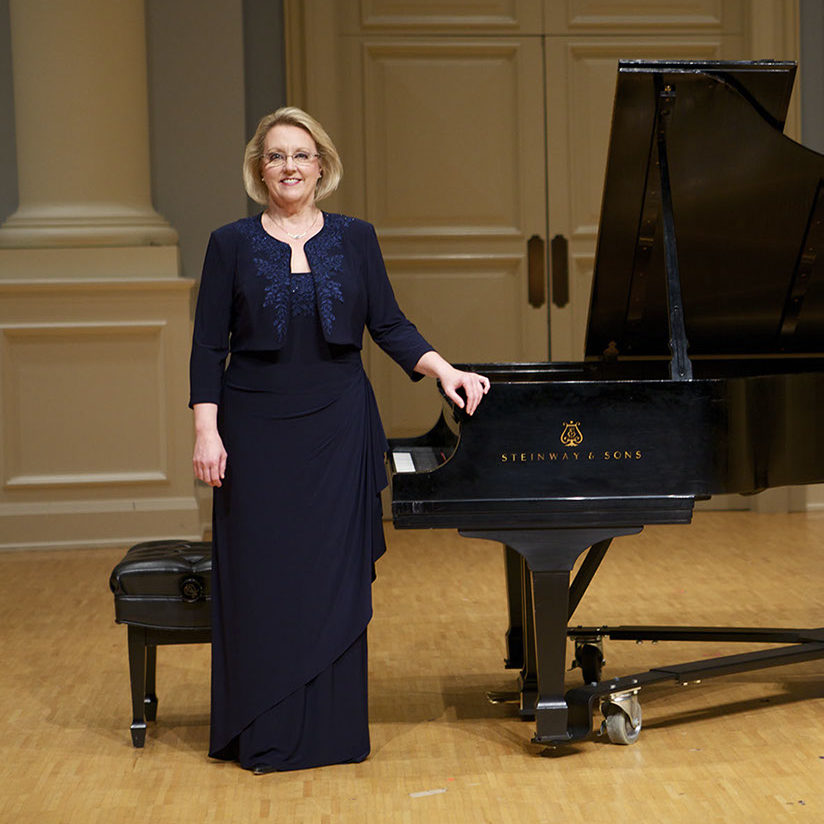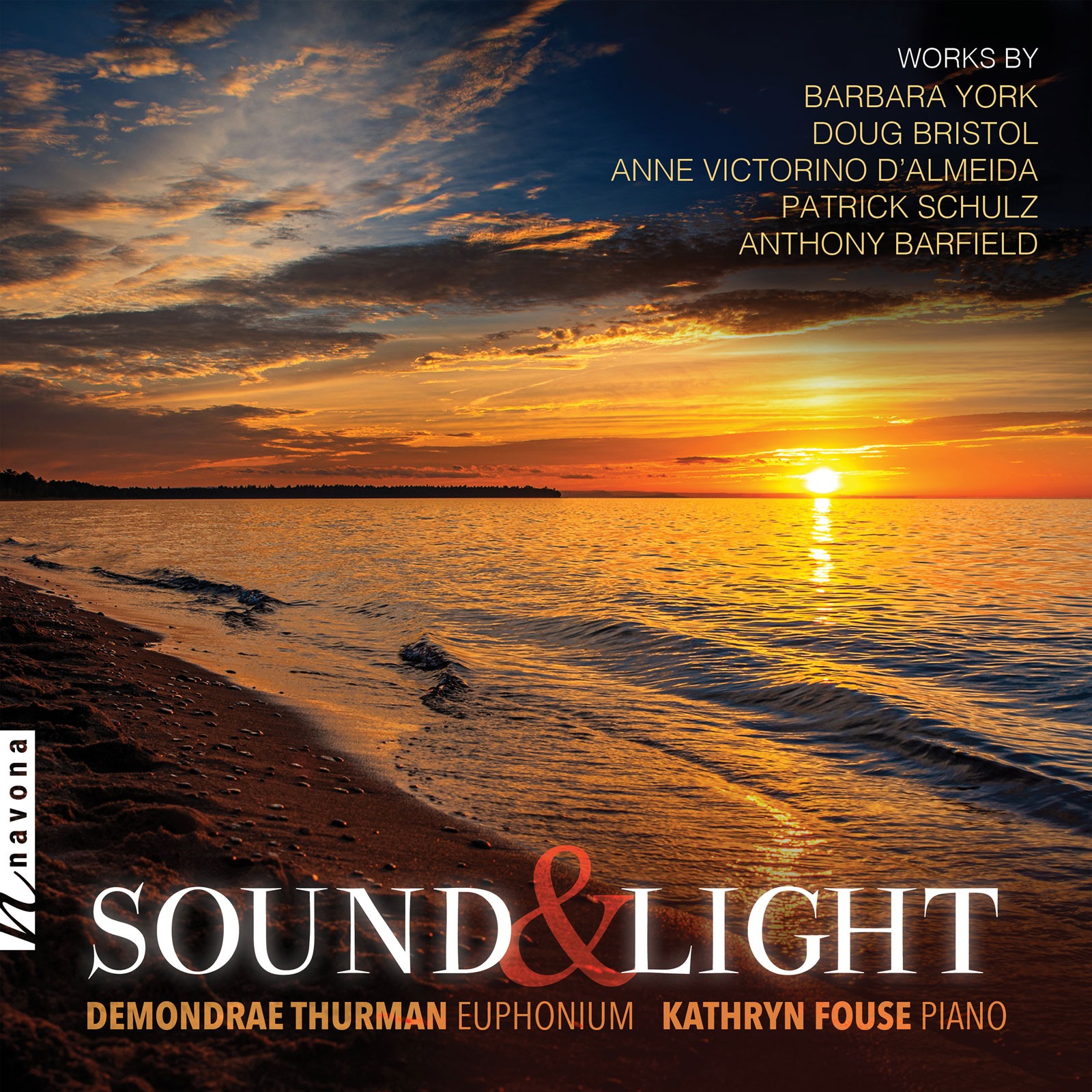Sound & Light
Barbara York composer
Doug Bristol composer
Anne Victorino D’almeida composer
Patrick Schulz composer
Anthony Barfield composer
Demondrae Thurman euphonium
Kathryn Fouse piano
For more than a century, the euphonium went underutilized as a solo instrument, with generations of composers overlooking its surprising range and rich, room-filling tone. In the latter half of the 20th century however, classical composers took interest in the formidable instrument and it evolved from a band staple to a stand-alone tool of artistic expression.
On SOUND AND LIGHT, Demondrae Thurman wields the euphonium to further expand its repertoire and cement its graceful power into the minds of composers of solos and orchestral works alike. Playing works written by five close friends, Thurman wholly dedicates himself to unlocking the musical mysteries of every measure and fully exploring the instrument’s potential.
SOUND AND LIGHT features accompaniment by pianist Kathryn Fouse and new works by Barbara York, Doug Bristol, Anne Victorino d’Almeida, Patrick Schulz, and Anthony Barfield.
Listen
Track Listing & Credits
| # | Title | Composer | Performer | |
|---|---|---|---|---|
| 01 | Euphonium Sonata "Child's Play": I. Quarter-Note Equals 132 | Barbara York | Demondrae Thurman, euphonium; Kathryn Fouse, piano | 5:04 |
| 02 | Euphonium Sonata "Child's Play": II. Dolce. Espressivo e rubato | Barbara York | Demondrae Thurman, euphonium; Kathryn Fouse, piano | 4:37 |
| 03 | Euphonium Sonata "Child's Play": III. Quarter-Note Equals 132 | Barbara York | Demondrae Thurman, euphonium; Kathryn Fouse, piano | 3:55 |
| 04 | Euphonium Sonata: I. Allegro | Doug Bristol | Demondrae Thurman, euphonium; Kathryn Fouse, piano | 3:10 |
| 05 | Euphonium Sonata: II. Very Slow. Rubato | Doug Bristol | Demondrae Thurman, euphonium; Kathryn Fouse, piano | 5:30 |
| 06 | Euphonium Sonata: III. Vigorously | Doug Bristol | Demondrae Thurman, euphonium; Kathryn Fouse, piano | 4:46 |
| 07 | Insinuações | Anne Victorino D’Almeida | Demondrae Thurman, euphonium; Kathryn Fouse, piano | 7:19 |
| 08 | Roonsonata: I. Prelude. Bluesy, With Bite | Patrick Schulz | Demondrae Thurman, euphonium; Kathryn Fouse, piano | 1:13 |
| 09 | Roonsonata: II. Main Course. Aggressive - Energetic | Patrick Schulz | Demondrae Thurman, euphonium; Kathryn Fouse, piano | 5:53 |
| 10 | Roonsonata: III. Nocturne. Mysterious & Very Expressive | Patrick Schulz | Demondrae Thurman, euphonium; Kathryn Fouse, piano | 4:48 |
| 11 | Meditations of Sound and Light: I. Sound | Anthony Barfield | Demondrae Thurman, euphonium; Kathryn Fouse, piano | 8:28 |
| 12 | Meditations of Sound and Light: II. Air | Anthony Barfield | Demondrae Thurman, euphonium; Kathryn Fouse, piano | 3:52 |
| 13 | Meditations of Sound and Light: III. Light | Anthony Barfield | Demondrae Thurman, euphonium; Kathryn Fouse, piano | 6:15 |
Recorded August 1-3, 2019 at Indiana University Auer Hall in Bloomington IN
Recording Session Engineer Jamie Tagg
Recording Session Producer John Stevens
Cover Photography Jon Whitaker Photography
Appreciation
Thanks Professor Gwyn Richards and the Indiana University Jacobs School of Music for the financial support to make this recording. I’m so grateful to my friend and mentor John Stevens for producing the project and helping edit the writing. No one knows my playing or my musical intentions better! Thanks to my colleague, Professor Julia Bentley for her terrific ears and page turning prowess. Thanks to my Sotto Voce Quartet family for artistic support. Thanks to Miraphone and Warburton Music Products for making the world’s best horn and mouthpiece respectively. I appreciate both companied for trusting me to help create amazing gear for all euphonium players. Lastly, I’d like to thank my wife Jenny Grégoire and my children Steffan and Emma for making the sacrifices necessary for me to create music in this way. Love you so much! — Demondrae Thurman
Equipment:
Miraphone Ambassador 5050 Edition Euphonium
Warburton “Demondrae” Model Mouthpiece
Executive Producer Bob Lord
Executive A&R Sam Renshaw
A&R Director Brandon MacNeil
A&R Danielle Lewis
VP, Audio Production Jeff LeRoy
Audio Director Lucas Paquette
VP, Design & Marketing Brett Picknell
Art Director Ryan Harrison
Design Edward A. Fleming
Publicity Patrick Niland, Sara Warner
Artist Information

Demondrae Thurman
Over the last 20 years Demondrae Thurman has established a worldwide reputation through his varied experiences as a euphonium soloist, educator, chamber musician, and conductor. He has given performances in Canada, Hungary, Japan, Hong Kong, Germany, France, Spain, Taiwan, Macau, Norway, China, Italy, Austria, England, Wales, and throughout the United States. Thurman is a frequently invited guest at many of the world's most noted festivals and conferences for Low brass including the International Euphonium Tuba Conference, the United States Army Band Tuba Euphonium Workshop, and the Leonard Falcone International Solo Competition.

Kathryn Fouse
Pianist Dr. Kathryn Fouse is Dean of the College of Visual and Performing Arts at the University of Mary Hardin-Baylor in Belton TX. In addition to her commitment to education, she continues to maintain an active performing career with recent appearances in such venues as the World Piano Conference (Novi Sad, Serbia), the soundSCAPE New Music Festival (Maccagno, Italy), and the Conservatorio de Música la Universidad Nacional de Colombia (Bogotá, Colombia) as well as throughout the United States.
Notes
Dear Listener,
I’ve been devoted to fostering the creation of quality repertoire for the euphonium since the very beginning of my professional career. Soliloquies, my first solo album, was the result of four composers who were also great friends of mine deciding to write music for me. The great thing about having music written for me by people who know me well musically and personally is that there’s an extra emotional connection present that drives me to learn the piece at a high level technically and solve every single inherit musical mystery. This recording has a very similar feel but somehow seems more intimate. Maybe that stems from recording chamber music with piano, having children, the success of my students over my 22 year teaching career…. I’m not sure, but I’m in love with every note of this recording!
Barbara York was looking for inspiration to write a sonata for euphonium and piano. She found it in the birth of my son, Steffan. Doug Bristol and I have been friends since the beginning of my career. I’m his daughter’s Godfather. Anne Almeda has been listening to me play and talk about music in her country of Portugal for the last 5 years. We share a love of life and passion for non-western classical music. Patrick Schulz and I have been best friends since our time as students at the University of Wisconsin. He’s as familiar with my playing as anyone I know because he sat right next to me in the Sotto Voce Quartet for almost 10 years. Anthony Barfield is dear to me for so many reasons. We’ve been plotting to make music together since I met him in 2002. He and I come from very similar backgrounds and, because of that, he has the ability to write in a way that captures the struggle and optimism of being born Black in the United States.
I’m grateful that the euphonium doesn’t have a standard repertoire to potentially stand in the way of the creation of new and amazing music. That fact excites composers to want to write a piece that just might stick. I believe this album is full of pieces like that.
Enjoy!
Demondrae

